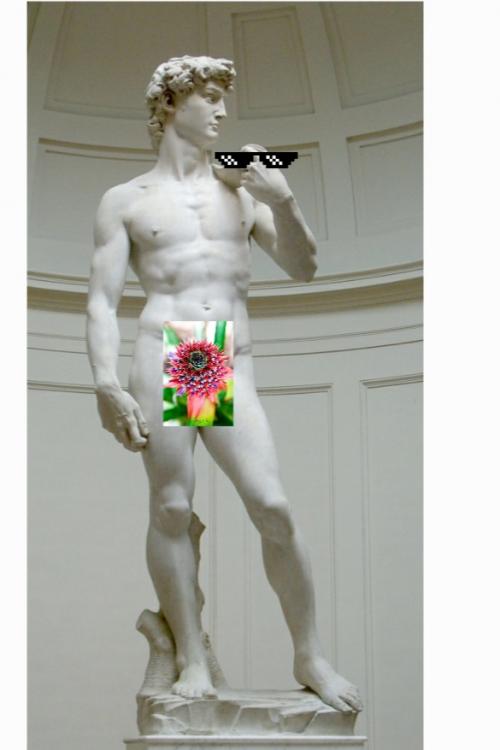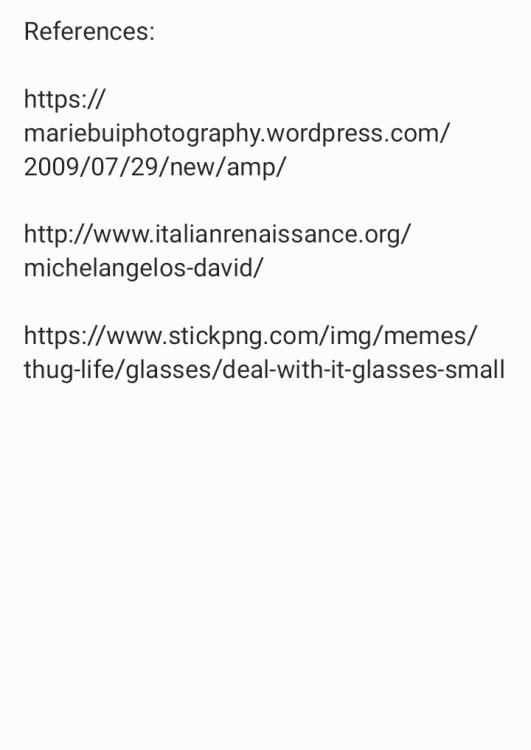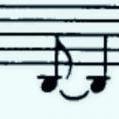Search the Community
Showing results for tags 'atonal'.
-
This is a retroactive post: I had sketches for this particular piece dating to mid-2022, and I decided to finish the rest of it by the end of 2022/beginning of 2023. I had just jumped into the world of free avant-garde atonalism (after listening to people like Takemitsu, Nono, Penderecki, Messiaen, Vivier, etc.) from the 60s and 70s, and I was captivated by the soundscapes they managed to paint using the unrestrained sounds they utilised, and the feelings they were somehow able to evoke despite writing music that was inherently musically 'wrong' to begin with. Admittedly, compared to those giants, my little prelude for solo piano does pale in comparison somewhat. I haven't given up on my post-tonality compositional dreams yet: I've had sketches for an Indonesian folk tale set in the style of an avant-garde late 60s atonal opera sitting around for a while now, but I haven't thought about working on those yet because it's hard to notate on software and I've only just gotten acquainted to a lot of extended techniques that one could use on various instruments. I don't know if there'll be very many people who'll enjoy this kind of music on this forum, but I still felt like sharing it anyway because I'm reasonably proud of this work. I find that it is difficult to achieve a balance between randomness and perceived 'harmony', often more so than writing conventional music. Whether you are pleased or repulsed by my work, I hope it's at least somewhat worthwhile and eye-opening (even if you'd rather keep them closed throughout!) 😉
-
-
This was inspired by the double canons by Brahms for female voices. But I wanted to experiment with a tonal row.
-
Finally, I have the 6 pieces. It was not easy to do this because this work is quite "synthetic". Always in piano-pianissimo, very short pieces. It was hard to give a role to all the instruments.
- 5 replies
-
- schöngberg
- atonal
-
(and 1 more)
Tagged with:
-
In this piece, I've taken the ideas I had behind the formal structure of my earlier upload, Episode #1, and I've changed it up a bit (largely listening to the critiques that work garnered). I've never been good describing my ideas in detail -long standing trait. Much like Episode #1, this work takes the basic Rondo structure and expands upon it. When I originally thought of the idea for an episodic (rondo-like) formal structure, my original goal was to intersperse the A sections with heavily contrapuntal material (B, C, and D sections all being fugal in nature). While I still may do a work like this in the future, I think that -for now- I'm trying to find a way to make this type of structure work for the language that I use in my works. The score is a lot nicer (thank you MUSESCORE!)
-
A short ditty inspired by Penderecki I wrote a few months ago. Recorded myself playing this on violin and bass, and edited the sound to emulate other instruments. I know it is not very well executed, but garageband is hard to work with sometimes. I don't have a score this time, sorry! Love it or hate it, please leave a comment on how I can improve. Thanks! thecreepycollective (online-audio-converter.com).mp3
- 10 replies
-
- 1
-

-
- avant garde
- atonal
-
(and 1 more)
Tagged with:
-
Hi Iam 22 years old amateur "just for joy" composer and I would like to get some feedback from you. This is my new piano only piece (usually make larger ensembles). Original chromatic melody in A minor-harmonic scale. All 11 halftones used in this piece, makes it more mysterious but not so false hope :D . Faded in and out with gentle rain. Recorded on soft upright piano called "UnaCorda".
-
This is extracted from a larger composition. 05 A TRIP - SCORE.pdf
-
I have some cats and dogs with me (7 in total). Sometimes I write music thinking of them. But this cat of mine, called Nole, is fond of composing now and then. What it's not easy is to capture his ideas..., when I am quick, I record his improvisations (atonal, of course) in my software. He's not bad..., I tried to theach him harmony but he's mainly self-taught. The right hand of this piece is by him. It's funny I can identify which paws or legs ("patas") he's using every moment. The left hand (harmony) is mine. Am I crazy? Well, music comes from everywhere. The other little piece (NOLITO) is entirely mine, this time yes: thinking of him. He's the most enigmatic of my pets.
-
It seems that anytime you get classical musicians or composers together on an online forum the topic, or really the flame inducing debate, of atonal vs. tonal music comes up. Though atonal music (or to use the more inclusive term post-tonal) has been around for about 100 years, there seems to be no end to the number of pages of post, rebuttals, counter arguments, and comments these threads generate. This "debate" goes far beyond just threads about the topic. Any mention of atonality vs. tonality anywhere near classical music (i.e. comment section on articles, youtube videos, and Facebook post) there are many fervent commentators ready to start the back and forth on this issue. This dichotomy is also present in real life situations. The near decade I have been in college I have seen this debate divide schools of music. While other professors advocate new music, others go as far as forbidding or refusing to teach new music to their students. There are even books and scholarly journal articles that pit the two against each other. But this thread isn't about the merits of tonality and atonality, this thread is about the why. It appears on the surface that there is no reason to not like both. It is very reminiscent of many other dichotomies in pop culture: Star Wars vs. Star Treck West Coast Rap vs. East Coast Rap Marvel vs. DC Beetles vs. Rolling Stones Band Geeks vs. Orchestra Dork vs. Choir Nerds Why is this such a hot button issue in the music world (be it mostly online music world)? What is gained through these debates? What does engaging in this debate say about us? Does this dichotomy expose our insecurities about our own music, or show our need to be superior by tearing down the styles of others? Or is it just human nature to simplify a complex issue like post-tonality and reduce it down to a binary?
-
I have read the works of Fux and Rameau, I am interested in writing music in the style of the baroque and the classical. Before I practice their teachings I have some questions: Apparently Bach, Mozart, Beethoven and Brahms ALL studied along the lines of Fux, and disagreed with much of Rameau's teachings. Again, considering that I am ONLY interested in writing music in the style of the baroque and the classical, should I abandon Rameau and stick only to Fux? I asked this question a month ago, but did not give as much information. Thanks.
-
Hello, I am studying composition at a university and one of my optative subjects is "Musical Sociology". For that subject I am writing a short paper about the accessibility of contemporary music. More specifically, I am studying the hypothesis that two elements, form and musical discourse, are more important than the musical language used in a given work in determining it's accessibility. For anyone interested in helping I have, at the moment, two questions. The first is: among contemporary works written using non tonal idioms, which would you consider to be more accessible, and why? I also ask the opposite question regarding works written in a more traditional tonal idiom. Which of those « works would you consider to be less accessible, and why? Thanks for the help, and sorry for any mistakes.
- 25 replies
-
- sociology
- contemporary
-
(and 6 more)
Tagged with:
-
THE PIANO MUSIC OF CHARLES IVES - *NEW* This New Master Class includes an introduction to Ives and his work; a mini-clinic on the use of dissonance in modern composition/improvisation, and listening and discussions of 5 of Ives' solo piano pieces. http://youtu.be/otGAvFUYDMk You will LUUVV this, free! Blessings and keep swingin, Dave Frank Director, Dave Frank School of Jazz NYC
-
So I'm writing this atonal piece for choir, are there any rules regarding accidentals?
- 11 replies
-
- atonal
- accidentals
-
(and 2 more)
Tagged with:
-
Oh hey everyone, I haven't been on this thing for ages. I am at uni now, studying composition among other things. For one of my assignments we have two different ways we can compose our piece. 1st - Using archetypal shapes or phrases that get repeated with variation, in the style of Syrinx by Debussy. 2nd - Talea and Color in the style of Messiaen. Chord patterns that phase in and out of the pulse of the beat. Here is my idea, i'm going with option 2 btw. I have a 12 tone row which is basically a set of four major and minor triads. The idea is that the base holds the route, once the rest of the triad is played, the bass then moves to the route of the next chord, basically creating three chords per bar rather than two. Here's an example. As you can see in the attached file, it appears as though the chords are: (F+ maj) - (space) - (Cmaj) When in reality because of the held on F+ there are three chords (F+maj) - (F+, E, G) - (Cmaj). The piece continues like this with the route in the bass and the response in the violin and viola being separated. Eventually the viola's rhythm is augmented (x 0.5) and the violin's diminished (x0.5) which creates the middle and the top line phasing in and out with the bass line. Sorry if that's a lot to take in, but is this an example of a talea and color? Is this technically an example of a modern passacaglia? I need to know i'm on the right track. Thanks









